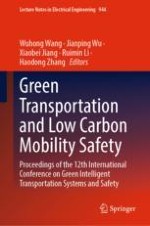2023 | OriginalPaper | Buchkapitel
A New Car Following Model Considering the Multi-headway Variation Forecast Effect
verfasst von : Yi-rong Kang, Shu-hong Yang
Erschienen in: Green Transportation and Low Carbon Mobility Safety
Verlag: Springer Nature Singapore
Aktivieren Sie unsere intelligente Suche, um passende Fachinhalte oder Patente zu finden.
Wählen Sie Textabschnitte aus um mit Künstlicher Intelligenz passenden Patente zu finden. powered by
Markieren Sie Textabschnitte, um KI-gestützt weitere passende Inhalte zu finden. powered by
